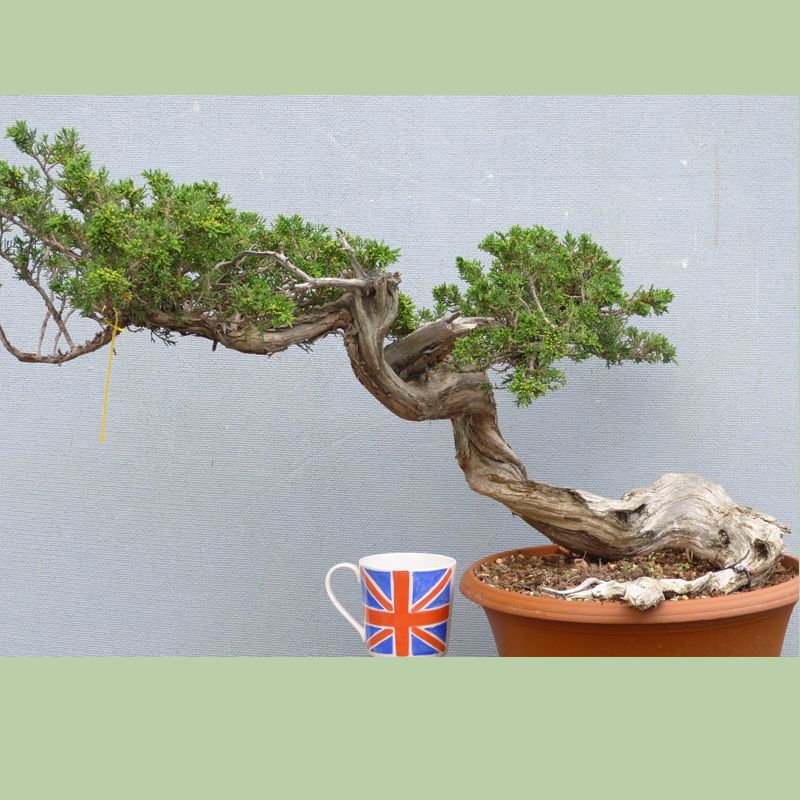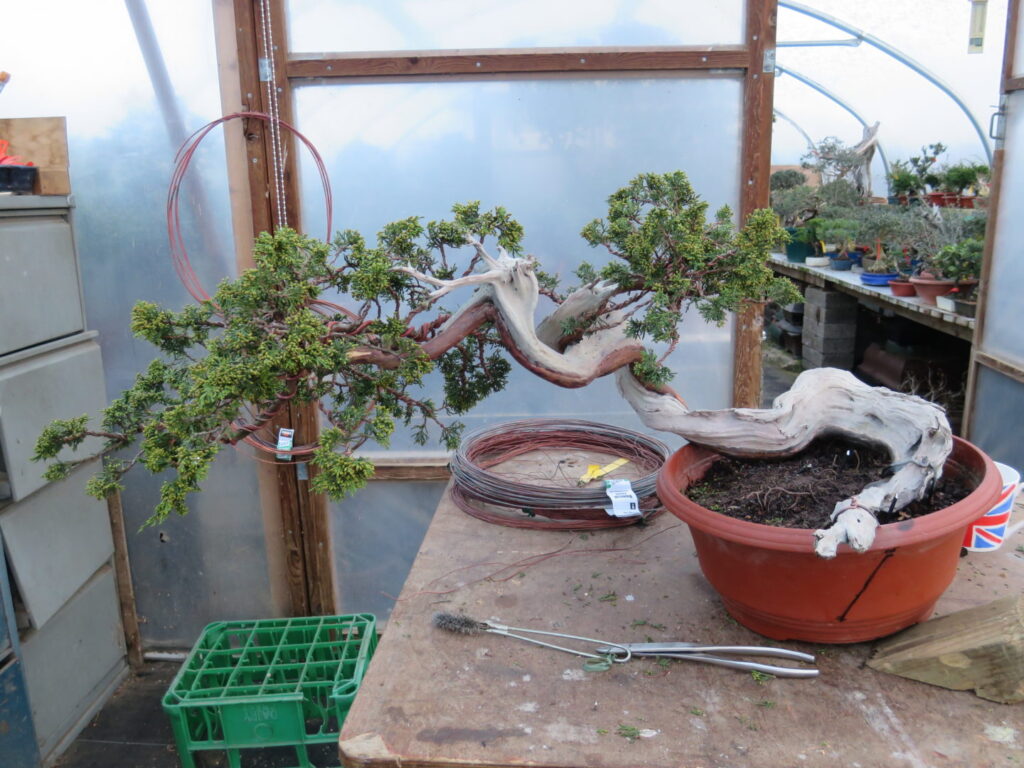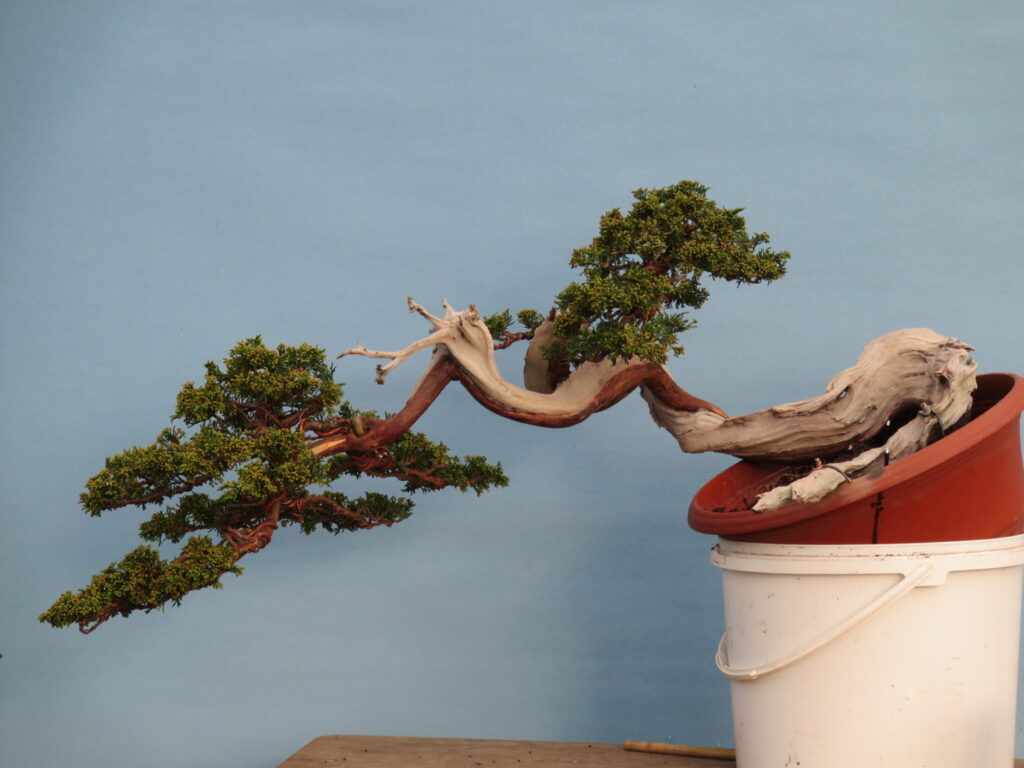If you stick at bonsai long enough and do enough work there comes a time when the doubt and uncertainty disappears. In relation to styling trees a lot of folk seem to struggle when it comes to dealing with the initial basics. A few years back I was regularly running group workshops at a local nursery. I turned up early Sunday morning and generally had ten participants, mostly absolute beginners, who turned up with garden centre material, a great deal of which had no business being bonsai. Given six hours I had my work cut out to teach everyone how to wire and get ten presentable trees out by the end of play. At first it was a struggle and I was dreading every visit. After a while I learned to trust my instincts and just went with my first impression every time. This worked out pretty well and before long the classes grew to fifteen folk 🙁
Having worked on bonsai relentlessly seven days a week, more or less, for twenty five years now I have honed that instinct and now I generally only have to glance at a tree to know how to deal with it. I always trust my first impression and go with my first idea. I have seen a lot of folk approach raw material and they instantly know what to do but then over complicate the process and start turning the tree this way and that. Before long they have lost their faith and become very confused and lost in the process. Then the cutting starts and in time there is simply not enough left of a tree to do a really good job and in most cases a promising tree becomes a semi-cascade, windswept or literati. All impressive styles if done right but not so impressive as a last resort because a tree has been reduced too much. Given a styling by committee this is the usual outcome.
Dan Robinson said it’s really important to fill your mind with images of wild, old and impressive natural trees. Then when faced with a piece of raw material at some point your mind can regurgitate an image for you that fits the bill. This all seems to happen at a sub-conscious level and some folk have become masters of exploiting the process. I find it’s a rare day I can’t walk up to a tree and some how just know what to do. In some cases a tree is just not right for the process and that’s tough. In other cases the material is so good there are a few options and experience dictates the best solution from several possibilities. On other occasions I look at a tree and see that the sum of it’s parts should make a very good bonsai but do not necessarily see the whole story. In this case I tend to put the tree away until one day I just know what to do.
This week I decided to get one of our sabina junipers worked. It’s been here a while and seeing as nobody gave it a second glance I figured a little refresh should do the trick. The tree has a lot of deadwood and some sand blasting soon sorted that out. Once clean it was easier to see what I had to work with. Designing junipers primarily revolves around getting the trunk inclination right and I thought this one was easy. However given the limitations of where the roots were and the live veins I was suddenly stopped in my tracks. What made it particularly difficult was that the top went away from me and was simply not bendable. The reverse side looked good but the roots were a foot behind the trunk and could not be seen from any angle. I turned the tree every which way for an hour before giving up. I just could not find a pleasing and practical solution. However having slept on it the next day I could see the answer as plain as day. The resulting tree is unlike anything I have done before and whilst it is currently all a bit short and thin i am content with the outcome for first work.
When working with yamadori it becomes necessary to suspend a lot of the rules we rely on for guidance. Trying to make yamadori conform will destroy a trees unique character every time. Personally I love to see these trees in their natural form but at some point we have to move forward and compromise is always the order of the day. This tree will easily re-pot at this angle with a minimum of trauma for the tree and as the foliage fills out and the two parts knit together I think it will build an impressive bonsai. Watch this space.
G.




Wow what a difference thats going to be a cracker of a Sabina when it fill out a bit love it great work Graham.
Peter from Wales.
Graham: very nice story and thanks for the words. I new too the world of Bonsai and have made a lot of mistake of young trees that are not here. but working on my learning curve for bonsai trees. I have found three big trees and going to take is slow and ask a lot of questions before working on them. I am no pro like you are Graham but what do you think of bringing back the branch back to the center of the dead wood? like in one of your videos? Or it just needs a awesome cascade pot? Thanks for your time and would like to see you do a learning CD on Bonsai tree work. greg
Graham, thank you for the inspiration and sharing the good work.
One thing always puzzled me is those wires. Don’t they restrict the branches from getting thicker? And when do you remove them? Never seen bonsai tree in a shop with wires all over it!
I really appreciate the follow up on this question.
Many thanks
Dear Mr Potter, i have read all your articles and watch of all your you tube videos, very clear explanation, you’re truly master of bonsai artist.
Your look is very calm, no wonder that your bonsai trees so marvelous.
Thank you for the teaching.
We also have a master bonsai artist in Indonesia, Mr Robert Steven…He is just like you..